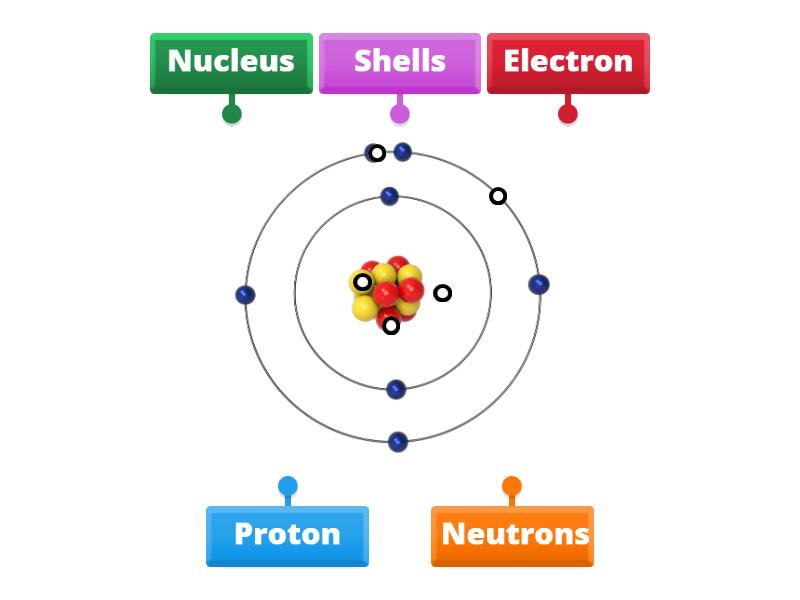Subatomic particles are the fundamental constituents of matter, serving as the building blocks for atoms and, by extension, the myriad forms of matter that encompass the universe. Understanding these particles, along with their roles and interactions, is crucial for comprehending the underlying principles of physics and the nature of reality itself. This discussion delves into the two predominant categories of subatomic particles: bosons and fermions, highlighting their characteristics, interactions, and significance within the framework of the Standard Model of particle physics.
1. Defining Subatomic Particles
Subatomic particles are particles that exist within atoms, which are composed of a nucleus surrounded by electrons. These particles can be further categorized based on their intrinsic properties such as mass, charge, and spin. The primary types of subatomic particles include protons, neutrons, electrons, and various force-carrying particles known as gauge bosons. Each type of particle plays an integral role in determining the structure, stability, and behavior of matter.
2. Fermions: The Matter Constituents
Fermions are particles that make up matter. They possess half-integer spins and adhere to the Pauli exclusion principle, which stipulates that no two fermions can occupy the same quantum state simultaneously. This characteristic leads to the formation of the chemical properties of elements and governs how matter interacts at the atomic level. The most notable types of fermions include:
- Protons: These positively charged particles reside in the atomic nucleus and have a mass approximately 1836 times that of an electron. The number of protons within an atom defines its elemental identity and is also referred to as the atomic number. Protons are composite particles, composed of three quarks bound by the strong force.
- Neutrons: Neutrons are electrically neutral particles that also reside within the atomic nucleus. Despite having a similar mass to protons, their neutrality allows for the stability of the nucleus, preventing electrostatic repulsion between positively charged protons. Neutrons are also composed of quarks and play a crucial role in nuclear stability and reactions.
- Electrons: Electrons are negatively charged particles that orbit the nucleus in various energy levels or electron shells. Although they possess negligible mass compared to protons and neutrons, electrons are essential for chemical bonding and electrical conductivity. Their interactions define the behavior of atoms in chemical reactions.
3. Bosons: The Force Carriers
Bosons are fundamental particles that mediate the fundamental forces of nature. Unlike fermions, bosons can occupy the same quantum state, facilitating the interactions between particles. There are four recognized fundamental forces, each associated with a specific type of boson:
- The Photon: A massless particle that mediates the electromagnetic force. Photons are responsible for electromagnetic radiation, including visible light. They play a crucial role in phenomena such as electricity, magnetism, and light propagation.
- The W and Z Bosons: These particles are responsible for mediating the weak nuclear force, which governs processes such as beta decay in radioactive elements. The W boson comes in two varieties (W+ and W–) and is responsible for charge exchange, while the Z boson is electrically neutral.
- The Gluon: Gluons mediate the strong nuclear force, which binds quarks together to form protons and neutrons, and subsequently binds these nucleons to form atomic nuclei. Gluons carry no mass or electric charge but are essential in maintaining the integrity of atomic structures.
- The Higgs Boson: Often referred to as the ‘God particle,’ the Higgs boson is associated with the Higgs field, which endows particles with mass through the Higgs mechanism. Its discovery was pivotal in validating the Standard Model and explaining why some particles have mass while others do not.
4. Interactions and Forces
Subatomic particles do not exist in isolation; rather, they engage in a series of interactions governed by fundamental forces. The interplay between these particles defines the behavior of matter and energy at the most fundamental levels. The four fundamental forces—gravitational, electromagnetic, weak, and strong—serve as the frameworks for these interactions:
- Gravitational Force: Although negligible at the subatomic level, this force governs the attraction between masses, including those of subatomic particles.
- Electromagnetic Force: This force arises from charged particles and is responsible for electric and magnetic interactions. Electrons interact with protons through this force, resulting in atom formation.
- Weak Nuclear Force: This force governs certain types of radioactive decay and particle interactions, enabling transmutation and the stability of the atomic nucleus.
- Strong Nuclear Force: The strongest of all forces, the strong nuclear force binds quarks into protons and neutrons, as well as nucleons within atomic nuclei.
5. Implications for Physics and Cosmology
The study of subatomic particles extends beyond mere academic curiosity; it has profound implications for our understanding of the universe. The behavior and interactions of these particles have led to pioneering discoveries in fields such as cosmology, where they contribute to models concerning the origin and evolution of the cosmos.
Moreover, theories that delve into the unification of forces, such as Grand Unified Theories (GUTs) or String Theory, seek to reconcile the behaviors of subatomic particles with the broader workings of the universe. These explorations have the potential to unveil novel insights into dark matter, dark energy, and the fundamental nature of reality itself.
Conclusion
A comprehensive understanding of subatomic particles is crucial for both theoretical and experimental physics. Each particle, with its unique properties and roles, contributes intricately to the fabric of the universe, influencing everything from atomic structure to the expansive cosmos. The ongoing quest to explore subatomic phenomena not only fuels scientific inquiry but also enriches our comprehension of the universe at the most fundamental levels.












